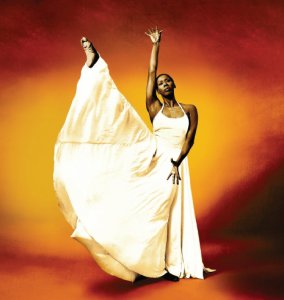When selling out is bad news
Dynamic pricing has already spread from airlines to the arts. Kara Larson cuts through the jargon and explains how US arts organisations are making it work for them.

Dynamic pricing (also known as yield management) simply means changing prices that reflect levels of demand. Airlines are the most familiar users of dynamic pricing. Online ticket prices change by the minute – the faster tickets sell for a particular flight, the quicker their prices will rise. But the whole concept of raising prices when demand grows is taking root in other sectors too: car hire companies, hotels, utilities, online retailers – and now theatres.
Setting initial prices at an appropriate level before tickets go on sale is fundamental to maximising revenues from sales (see Tim Baker and Jenny Scudamore’s article in AP196). But to do this, we need to know enough about the marketplace to accurately predict demand for tickets, and this may not be as simple as it sounds. For example, our projections of ticket sales volume for a particular production may well be based on comparable but not identical events. Furthermore, we may be obliged to set prices a year or more in advance of performances and things can change in the intervening time. Dynamic pricing offers the opportunity to re-set pricing to react to errors in our predictions or unpredictable changes in the marketplace.
Many theatres are accustomed to discounting tickets for performances that aren’t selling well, adjusting prices to meet demand (or, in this case, a lack thereof). That’s dynamic pricing. But if we’re willing to lower our prices when demand is low, why are we unwilling to raise them when demand is high? I have worked for presenters who were delighted to sell out some performances months in advance, but from a revenue perspective, selling out isn’t good news. If all the tickets sell out months in advance, it tells me the price was too low.
The practices (and results) of five US companies that currently use dynamic pricing are illustrated here (right). Their schemes have several things in common:
• These companies don’t publish prices (other than on their websites, which are constantly updated)
• They rarely raise the lowest available price
• They report few or no patron complaints
• They have weekly reviews of sales and pricing
• They report total season revenue increases of up to 4%
Their schemes also differ in a number of ways:
• Some companies apply small price changes
broadly across many performances, while others impose quite large changes infrequently
• Some organisations spend just an hour or two a
week reviewing pricing, while others have staff managing prices nearly full-time
• Some adjust prices for specific seats or sections, others for all unsold seats.
Someday we may live in a paradise where art doesn’t need to be paid for. Until then, on those occasions when we are fortunate enough to offer unexpectedly popular performances, fair and above-board dynamic pricing can help close the gap between our costs and our revenue.
Pacific Northwest Ballet, Palm Beach Opera, San Diego Opera
Whether they came to it through the advice of a consultant or discovered it on their own, all three of these companies use nearly identical dynamic pricing schemes. They seek to top up revenue by using total sales as a trigger to raise prices in small increments. When a predetermined percentage of total tickets have sold for any given performance, prices are raised by a small amount. Most commonly, when 80% of any performance’s tickets have sold, the price of all remaining tickets is raised by $5 (at 90% an additional $10 is added). Outcome: this adds 1.5–2% to total season revenues.
Pittsburgh Opera
Similarly, this opera company uses total percentages of house sales as triggers for price changes – at 60%, 70%, 80%, and 90% of total house sold the price rises 10–15% across all available sections.
Outcome: this adds 1–1.5% to total season revenue.
Carolina Performing Arts – a university-based multi-disciplinary presenting theatre.
I use dynamic pricing to ‘correct’ mis-pricing, but try to do it sparingly, for only those performances where my initial prices or projections were significantly wrong. We’ve built projecting models that incorporate ‘speed of sales’ curves for a variety of comparable performances. When the real sales curves begin to differ dramatically from the expected, we adjust prices until the curve comes in line with expectations.
Outcome: when dynamic pricing was implemented for four high-profile performances in summer 2009, this added 11% to revenue for that event, and 2.5% to season-total revenue.
Alvin Ailey American Dance Theatre
Three seasons ago, Ailey worked with a consulting firm to rescale the house and implement a battery of revenue management schemes, including dynamic pricing. Uniquely, they build their seating for each season, reserving rows of each price section off-sale. After a period of sales reveals trends in demand, these rows are priced according to response, either as part of the lower-priced seating block or as part of the adjacent higher-priced section, depending on which price band is selling faster.
Outcome: The impact of dynamic pricing revenue is reported separately, but revenue has risen sharply in the past two seasons and managers estimate that a big chunk of the difference is attributable to pricing.
Chicago Symphony
With an extraordinarily strong subscription base, this orchestra’s goal is to make extra revenue while ensuring that subscribers get the best possible prices. As patrons understand that prices may rise in future, they have even more incentive to subscribe early. Subscription sales are used to build projections of single ticket sales, and regular evaluations of remaining capacity reveal performances and sections where price rises are indicated (the amount of the rise is based on the manager’s intuition).
Outcome: this adds 1.5–2% to total season revenue.
Join the Discussion
You must be logged in to post a comment.